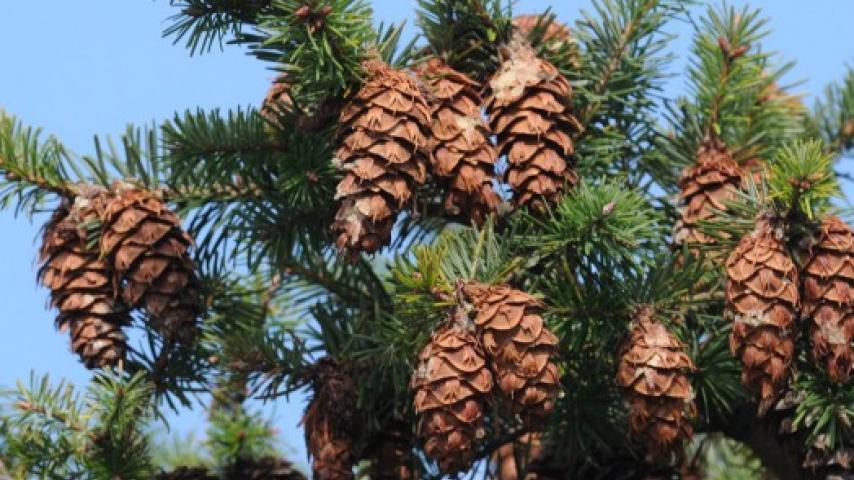Douglas-fir (Pseudotsuga menziesii)
This tree is dominant in several forest types in the Pacific Northwest.

KINGDOM Plantae - PHYLUM Coniferophyta - CLASS Pinopsida - ORDER Pinales - FAMILY PInaceae
It becomes a climax species in dry interior forests and is very common through a long series of successional stages in the wetter coastal forests, but because it is shade-intolerant, it is eventually overshadowed by the true climax species Western Hemlock. Potentially huge, the largest trees have reached 120 m in height with a trunk up to 6 m in diameter. The oldest individuals may be more than 1,000 years old.
The leaves of Douglas-fir are typical of the pine family, densely packed short and pointed green needles with two whitish bands running along the underside. The bark becomes corky in older trees, with characteristic deep vertical grooves. The thick bark allows older trees to survive the frequent, low intensity fires that were common in the interior West. They are often the first conifers to appear after a disturbance because Douglas-fir germinate best in unshaded, disturbed, nutrient poor soils.
Their 10-cm cones hang down and are distinctive, the bracts beneath each scale looking like the tail and hind legs of a mouse hiding there. The seeds are winged and can disperse at least short distances in strong winds. Male cones, on the same trees, are only 2-3 cm long, and they produce large quantities of pollen during the spring. The pollen drifts on the wind and pollinates female cones, typically on other trees.
Cone crops are irregular, heavy crops alternating with light or moderate ones, on occasion no crop at all. In addition, these cycles differ from place to place. This is thought an adaptation to prevent seed-eating insects from becoming abundant in any one stand. Red Crossbills are small, conifer-seed-eating birds that can take advantage of this, moving from stand to stand when cone crops are high and breeding there. They hang from the base of the cone, lift each scale, and extract the seed from beneath it with their crossed mandibles and tongue.
This relationship has gone on long enough over evolutionary time that one type of Red Crossbill specializes in Douglas-fir cones. Even more specialized are Red Tree Voles, mice that make their nests high in Douglas-fir trees and live largely on their seeds. Douglas Squirrels cache large quantities of the seeds for later use. They pick up a cone and quickly strip each scale off to get at the seed, which their sharp teeth make short work of.
Douglas-fir is a long-favored timber tree because its wood can be shipped while moist, unlike other species. Accordingly, it has been planted widely in other temperate regions, including western Europe, southern South America, and New Zealand. It has become naturalized in these regions and, because the native animals are not adapted to it, greatly reduces the biodiversity of forests. It is being controlled in New Zealand for this reason.
This species was named after both David Douglas, a Scottish botanist who introduced it into cultivation in the British Isles in 1827, and Archibald Menzies, another Scottish botanist who discovered the tree on Vancouver Island in 1791.

